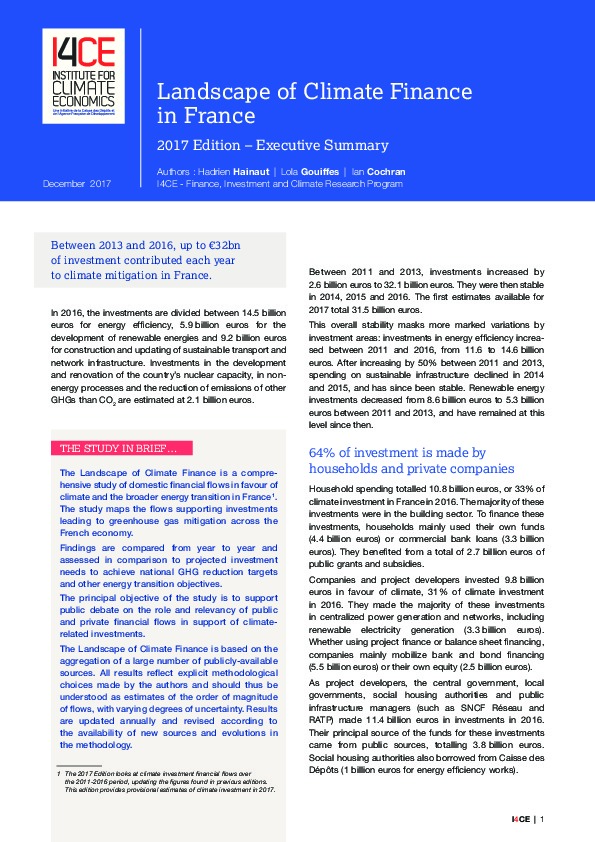Landscape of climate finance in France, 2017 Edition
To better understand the financing of the fight against climate change and the energy transition, the study identified investments that contribute to the reduction of greenhouse gas emissions in France. These expenditures are analyzed to identify which actors have undertaken these projects and how they are financed.
Climate investments mainly distributed in three areas of the energy transition
The 2017 edition of the study identified up to 32 billion euros invested in climate areas in France each year between 2013 and 2016. To give an order of magnitude, this represents about 10% of material investments in France this year. This total includes:
- EUR 14.5 billion in energy efficiency, mainly in the building sector,
- EUR 5.9 billion for the development of renewable energies,
- EUR 9.2 billion for the construction and upgrading of sustainable transport and network infrastructure.
Added to this are 2.1 billion euros in nuclear energy and the reduction of non-energy related emissions.
Overall investment stability masking sectoral variations
Between 2011 and 2013, investments increased by EUR 2.6 billion to EUR 32.1 billion. They were stable in 2014, 2015 and 2016 and the first estimates available for 2017 bring the total to 31.5 billion euros.
This overall stability masks more marked variations by domain:
- Investments in energy efficiency increased between 2011 and 2016, from 11.6 to 14.6 billion euros
- After increasing by 50% between 2011 and 2013, spending on sustainable infrastructure declined in 2014 and 2015, and has since been stable.
- Renewable energy investments decreased from 8.6 billion to 5.3 billion euros between 2011 and 2013, and has remained at around this level.
If private actors make the majority of investments, 52% of funding is led by the public sector
The majority of investments were made by private project developers: households, investing 33% or 10.8 billion euros, and businesses 9.8 billion euros, or 31% of the total invested in 2016. However, just over half of the funding mobilized to make investments are linked to public actions and incentives. From 2011 to 2015, the proportion of funding driven by the public sector increased from 48% to 52% of total investments.
To learn more about I4CE’s research on domestic climate finance, visit the Landscape of Domestic Climate Finance project page.

